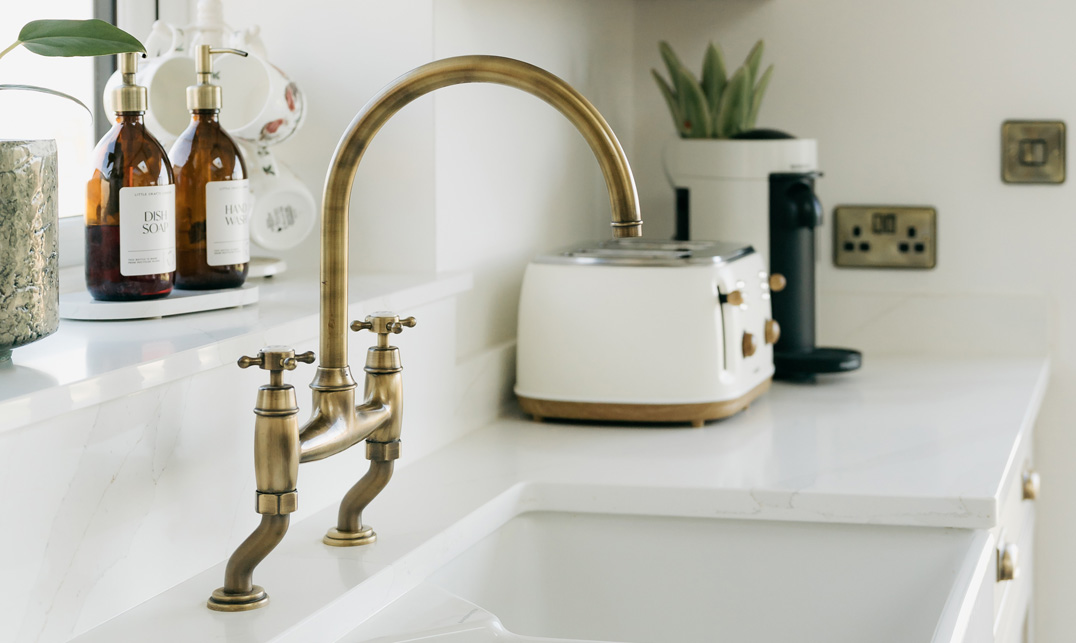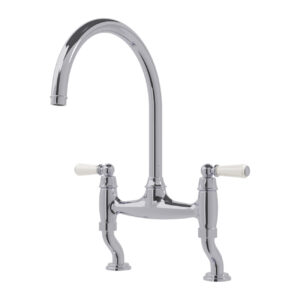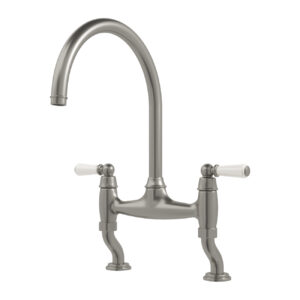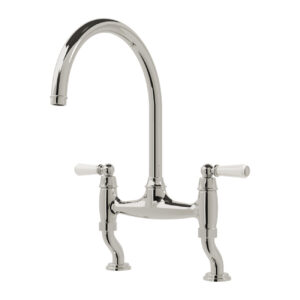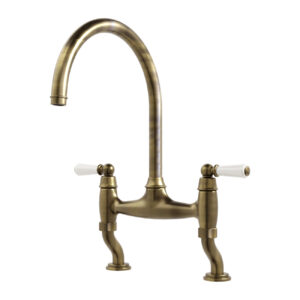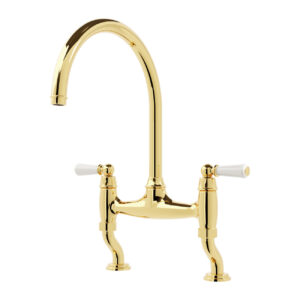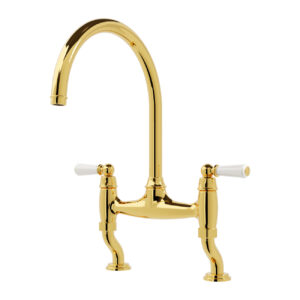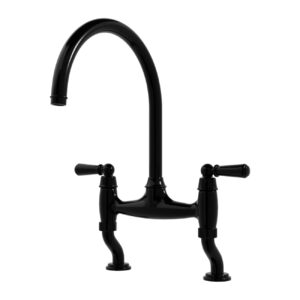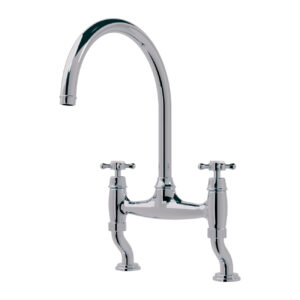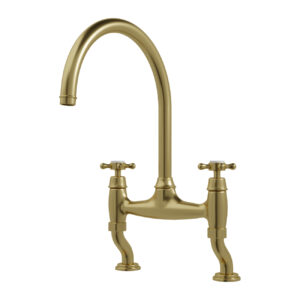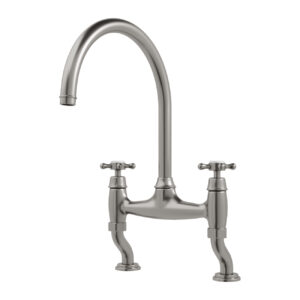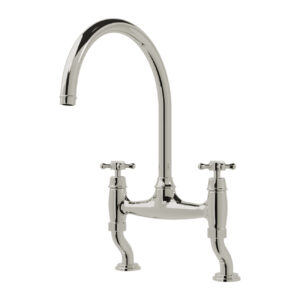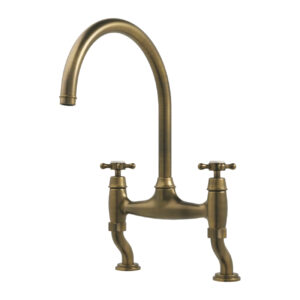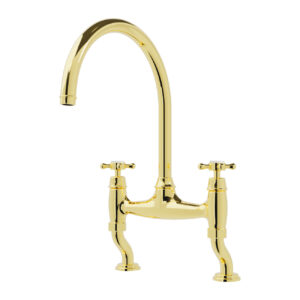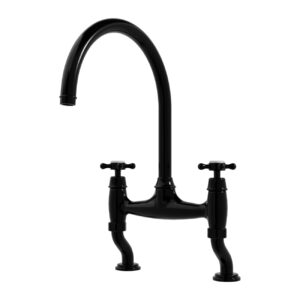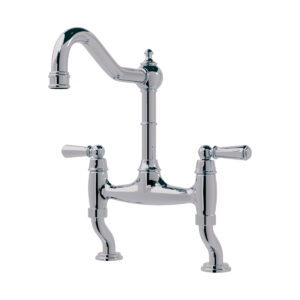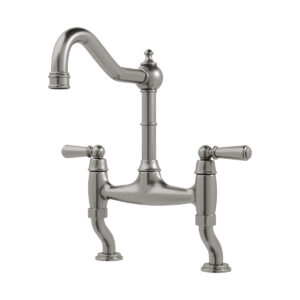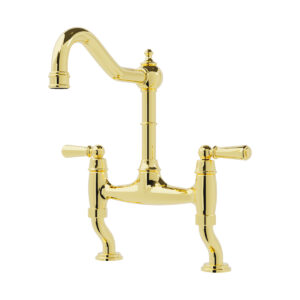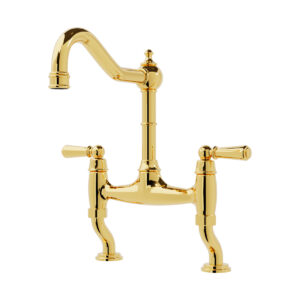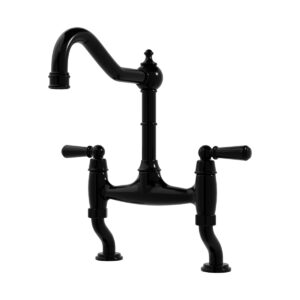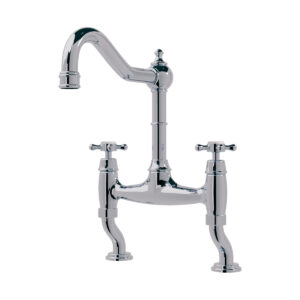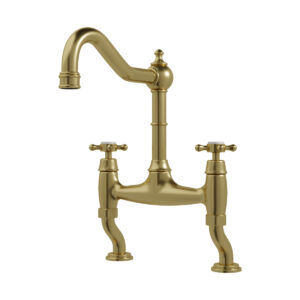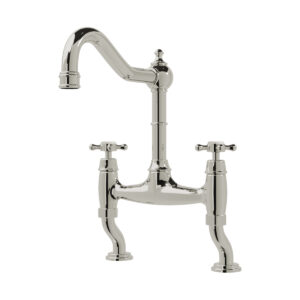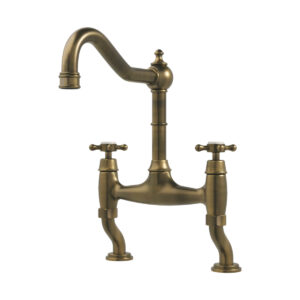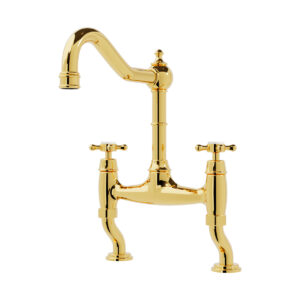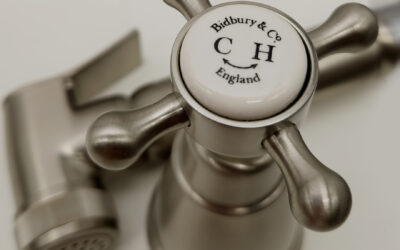The kitchen bridge tap, a seemingly simple fixture, boasts a rich history. Its evolution intertwines with advancements in plumbing technology, shifting societal preferences, and economic factors. Let us delve into the fascinating journey of this enduring kitchen staple.
Early Incarnations: A Victorian Luxury
The earliest kitchen bridge mixer tap designs emerged during the Victorian era. Imagine grand houses adorned with these elegant fixtures, a stark contrast to the simple single wall mounted taps of the time. Back then, plumbing systems were in their nascent stages, primarily concentrated in urban areas with wealthy residents. Bridge taps, the best of which were crafted from ornate brass or porcelain, were a symbol of affluence and Victorian technological innovation.
Function Over Form: The Rise of Functionality
The 1800s and early 1900s witnessed a surge in the development of plumbing infrastructure as access to clean water was clearly shown to improve the nation’s welfare and wooden pipes were replaced with metal that greatly increased water pressure. Now, water and sewage services began reaching more homes, not just the large houses of the wealthy. This period saw a shift in focus from purely aesthetic design to functionality. Bridge taps offered a significant advantage over the prevalent wall-mounted taps.
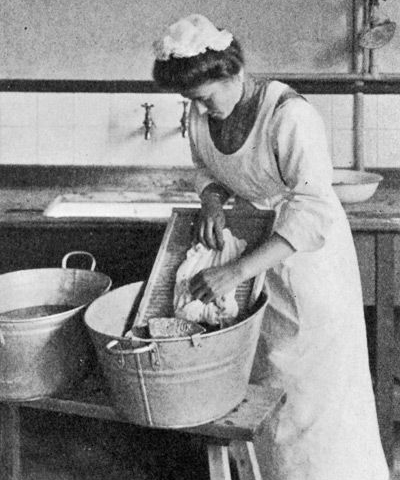
Bridging the Gap: Rural Developments
Unsurprisingly, the widespread adoption of plumbing systems in rural areas lagged behind urban centres. It was not until later in the century that running water in the kitchen became a more common sight in these regions. Here, the open bridge design provided ample space for the jobs needed in a rural setting, making it easier to fill large pots for cooking and buckets for the garden or farm.
Beyond Utility: A Design Statement
As the 20th century progressed, kitchen bridge taps transcended their purely functional role. Kitchen design became an increasingly prominent aspect of home aesthetics, a place not just to cook but also to relax and entertain. Bridge taps, with their distinctive silhouettes and potential for decorative flourishes, began to be seen as design statements and evolved to cater to this demand.
Modern Adaptations: Technology Meets Tradition
Today, bridge taps continue to be a popular choice for both practical and aesthetic reasons. Modern bridge taps incorporate technological advancements such as pull-down spray heads, touchless operation, and temperature control features. These innovations enhance functionality while maintaining the timeless appeal of the bridge design.
Continuing a Legacy of Innovation and Style
